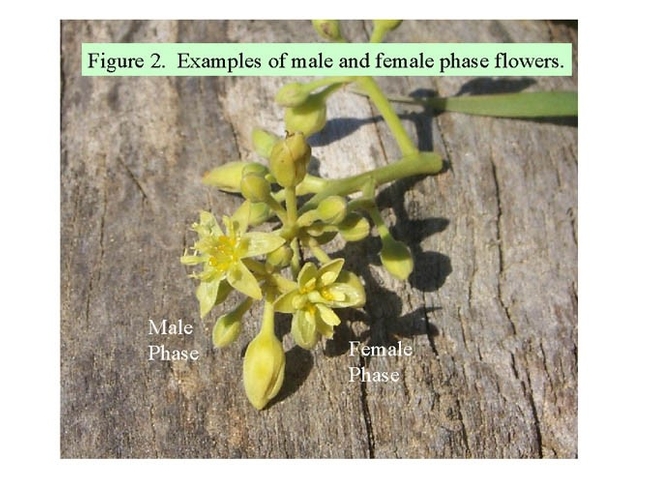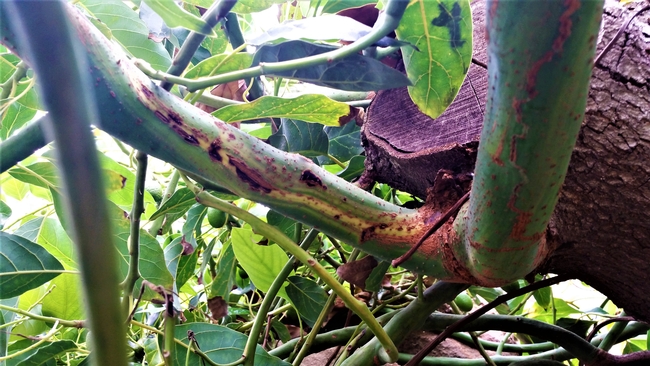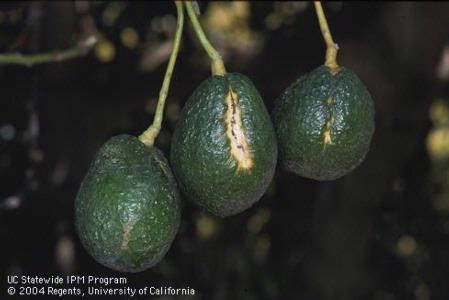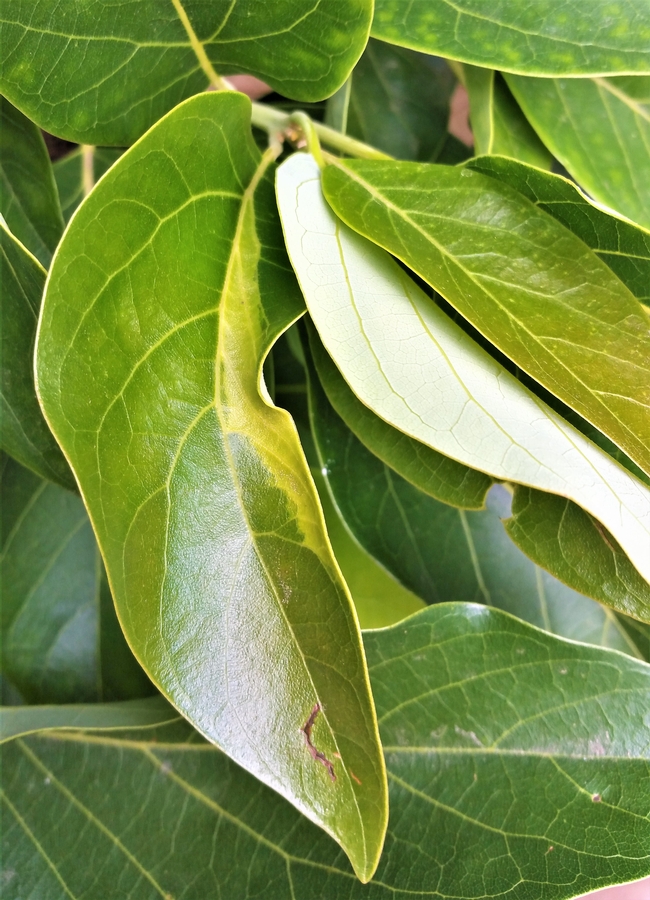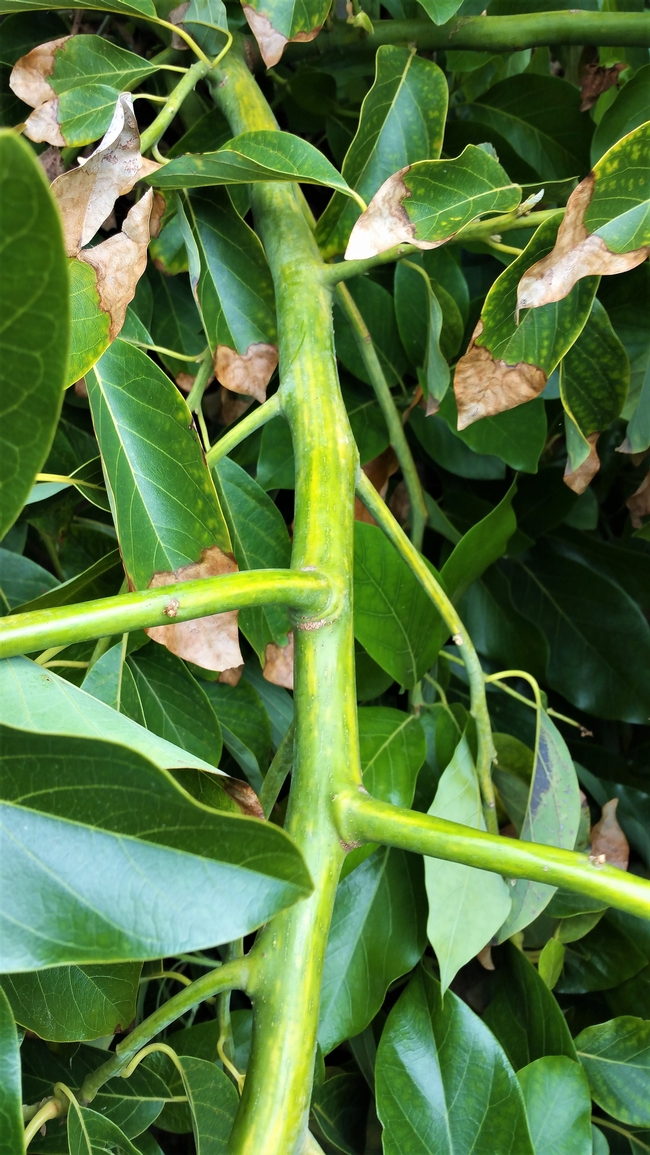- Author: Ben Faber
Citrus: UC IPM Pest Management Guidelines
| Publication Number: 3441 Copyright Date: Rev. 2017
Length: 234 pp.
Language: English
Inventory Type: PDF File
|
|
| This is a free publication if you access it as a web page or downloadable PDF document.
These official UC-approved guidelines for pest monitoring techniques, pesticide use, and nonpesticide alternatives for agricultural crops are essential tools for anyone making pest management decisions in the field. This 124-page guideline covers citrus fruit. Updated August 2015. A hard copy version of these guidelines can be purchased as Publication 3441P. The PDF version of this publication is best viewed using the free Adobe® Acrobat® Reader. You can download a free copy of the Acrobat Reader from Adobe Systems Incorporated. Some users have experienced problems using Preview with these documents; we recommend using the Adobe® Acrobat® Reader. |
|
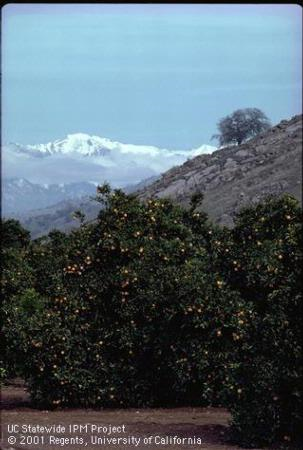
- Author: Ben Faber
SACRAMENTO — The California Department of Food and Agriculture (CDFA) and the United States Department of Agriculture (USDA) have established a 94-square mile quarantine in portions of Riverside and San Bernardino counties following the detection of the citrus disease huanglongbing (HLB), or citrus greening, in a single citrus tree in the city of Riverside. HLB is a deadly disease of citrus plants and closely related species, and can be transmitted from tree to tree by the Asian citrus psyllid.
The quarantine boundaries are on the north, Interstate 10; on the east, Box Springs Mountain Reserve; on the west, Riverside Municipal Airport; and on the south, East Alessandro Boulevard. HLB quarantine maps for Riverside and San Bernardino counties are available online at: www.cdfa.ca.gov/plant/pe/InteriorExclusion/hlb_quarantine.html. Please check this link for future quarantine expansions in these counties, should they occur. Quarantines are already in place for HLB in portions of Los Angeles and Orange counties.
The quarantine will prohibit the movement of all citrus nursery stock out of the area, while maintaining existing provisions allowing the movement of only commercially cleaned and packed citrus fruit. Any fruit that is not commercially cleaned and packed, including residential citrus, must not be removed from the property on which it is grown, although it may be processed and/or consumed on the premises.
Residents are urged to take several steps to help protect citrus trees:
- Do not move citrus plants, leaves or foliage into or out of the quarantine area, or across state or international borders. Keep it local.
- Cooperate with agricultural crews placing traps, inspecting trees and treating for the pest.
- If you no longer wish to care for your citrus tree, consider removing it so it does not become a host to the pest and disease.
CDFA crews have already removed the infected tree and are in the midst of a treatment program for citrus trees to knock down Asian citrus psyllid infestations within 800 meters of the find site. By taking these steps, a critical reservoir of the disease and its vectors will be removed, which is essential to protect the surrounding citrus from this deadly disease.
HLB is a bacterial disease that attacks the vascular system of plants. It does not pose a threat to humans or animals. The Asian citrus psyllid can spread the bacteria as the pest feeds on citrus trees and other plants. Once a tree is infected, there is no cure; it typically declines and dies within a few years.
CDFA, in partnership with the USDA, local county agricultural commissioners and the citrus industry, continues to pursue a strategy of controlling the spread of the Asian citrus psyllids while researchers work to find a cure for the disease.
—California Department of Food and Agriculture
Over 20 new trees in Southern California have been confirmed HLB-positive. The new finds raise the total number of trees with huanglongbing disease found in California to around 100. All of the trees found in the state have been located in residential areas.
 The Citrus Pest and Disease Prevention Program (CPDPP) issued a press release that stated 21 trees in Anaheim, and four trees in Pico Rivera tested HLB-positive. The CPDPP, a program of the California Department of Food and Agriculture (CDFA), stated the current quarantine in Southern California would be slightly expanded in Orange and Los Angeles Counties.
The Citrus Pest and Disease Prevention Program (CPDPP) issued a press release that stated 21 trees in Anaheim, and four trees in Pico Rivera tested HLB-positive. The CPDPP, a program of the California Department of Food and Agriculture (CDFA), stated the current quarantine in Southern California would be slightly expanded in Orange and Los Angeles Counties.
The new detections were found due to intensive surveying that's part of the response program. Highly trained crews sample trees where HLB-positive Asian citrus psyllids have been found. CDFA says their Sacramento facility can process 10,000 samples a month.
All of the detections in California have been residential trees. The CPDPP is currently running an outreach program that involves public service announcements, coordination with officials, and large public events in the quarantine area. The goal is to educate residents on the disease and the insect that spreads it. Go to the CPDPP website to find out more about the disease, insect, and quarantines.
Photo: HLB symptoms
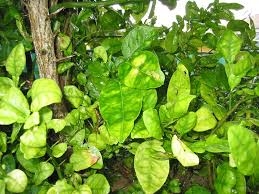
- Author: Sonia Rios
Photo: Sun Blotch Branch
Sun-blotch, a viroid disease affecting the avocado, was observed as early as 1914 in Southern California. Sun-blotch is widespread in California, and likely to be found in all districts where avocados are being grown. The main counties in which the disease is found are San Diego, Ventura, Los Angeles, Orange, Riverside, and Santa Barbara.
Symptom's and signs
Sunblotch causes a wide variety of symptoms or may exhibit no symptoms in some hosts. The rate of spread of sunblotch virus appears to be extremely slow due to improved cultural practices in the nursery and field, and the apparent absence of an insect vector. Symptoms of sunblotch include necrotic, red, yellow, or white discolorations on fruit, often in depressions or scars in the fruit surface. Twigs can develop narrow, necrotic, red or yellow streaks on their surface or in shallow lengthwise indentations along the twig. Leaves may have white or yellowish variegated areas and be deformed, but leaf symptoms are uncommon. Rectangular cracking and checking of the bark, called "alligator bark," often occurs on the trunk and larger branches. Infected trees may be stunted and have a disproportionate amount of horizontal growth or sprawling lateral low limbs. Trees with visible sunblotch symptoms often have reduced yields. Infected trees can also be symptomless, although large reductions in yield of previously vigorous trees may indicate the presence of the viroid in otherwise symptomless carriers.
Photo: Sunblotch fruit
Sunblotch is caused by dozens of variants of submicroscopic particles of genetic material (viroids, smaller than a virus with no protein coat and only nucleic acid) that alter development and growth of infected plants. Sunblotch viroid can move systemically within avocado, and it persists in host tissues. Trees that do not show symptoms even though the viroid is present are known as "symptomless carriers." Nearly all cuttings and seed from symptomless carriers will be infected with viroid. However, seedlings from symptomless carriers do not show symptoms of sunblotch when they are used as rootstocks, but the disease often appears on scions grafted to them. Conversely, most seed from trees with symptoms are not infected, and budwood and shoot cuttings from sunblotch leaf symptomatic trees often do not contain viroid. [BF1] The viroid is transmitted in pollen, but pollen only infects the fruit and seed produced from it. Unless a tree is infected by grafting or some way other than through pollen, there will be no viroid in budwood, root grafts, and shoot cuttings from that tree. [BF2] Transmission of the viroid most often occurs during grafting by using infected budwood or rootstock seedlings from infected trees with or without symptoms. Natural root-to-root grafts are important in transmitting sunblotch in groves. Mechanical transmission through wounds caused by contaminated harvest clippers, pruning tools, and injection equipment can also be important if infected trees are in the grove. [BF3] Spread via pollen from an infected tree to the flower ovule of a noninfected avocado, resulting in infected seed, can cause fruit to be culled, but does not further spread the disease unless seed is propagated. There is no evidence of insect transmission.
Management
Nursery
Careful propagation of nursery stock to eliminate viroid has greatly reduced sunblotch to a relatively minor disease. However, ongoing monitoring and management is required in nurseries and established groves. Sunblotch can be easily overlooked, and there are many ways that trees can become infected. Look for diseases and disease-promoting conditions regularly throughout the grove. In the nursery, carefully select disease-free scions and seed sources. Use stringent sanitation and frequent disinfection to avoid spreading pathogens. Periodically confirm that propagation sources are disease-free (indexing) by grafting propagative source material to young Mexican seedlings and observing leaves and twigs for sunblotch symptoms, or by performing a genetic test. Plant only indexed nursery stock that is registered as disease-free.
Field
Promptly remove symptomatic trees from the grove and chemically kill the stumps. Do not retain infected, symptomless trees just because yield does not seem to be affected; symptomless carriers are a highly infective source that can dramatically reduce yield on other trees. If only fruit and seed are infected (from infected pollen), it may not be necessary to remove that tree if indexing indicates the rest of the tree is not infected. However, trees with only fruit and seed infection indicate that other infected (possibly symptomless) trees nearby need to be indexed or removed. The danger of spreading viroid increases in established orchards where mature trees are pruned to reduce tree size and restimulate or maintain fruit production. Severe pruning of symptomless carriers, and perhaps other severe causes of tree stress, are suspected of causing viroid to become active in the new growth, inducing previously symptomless trees to exhibit symptoms. Disinfect pruning tools, harvest clippers, and injection equipment before beginning work on a new tree. Scrubbing tools clean and then soaking them in a 1.5% sodium hypochlorite solution is effective. Growers must use a registered disinfectant and follow label directions.
Photo: Sunblotch leaf
As sunblotch is systematic in the avocado tree, it can exist in the roots as well as the above-ground parts. Thus, it might be transmitted through natural root graftage between a healthy and diseased tree. It is known that tree roots will sometimes become forced together in some manner until finally a natural root graft has taken place. The natural grafting between roots of trees has been attributed to a number of causes, some of which are as follows: (1) Roots growing in a shallow soil underlaid by a hardpan when crowded for growing space will sometimes become grafted together. (2) Two roots growing between two rocks or other barriers when wedged together tightly may form a graft. (3) Roots from mature avocado trees which are planted close together in a grove may, if crowded for growing space, form a graft. It is believed, through evidence existing in certain avocado orchards, that sun-blotch disease has infected healthy trees through natural root graftage.
- Author: Ben Faber
|
|
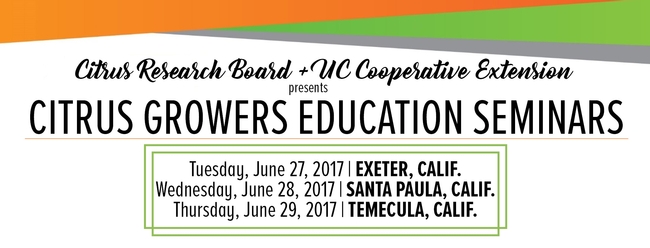
- Author: Ben Faber
The latest edition of Topics in Subtropics newsletter is out, Elizabeth Fichtner as editor. Read on.
TOPICS IN THIS ISSUE:
-
Why has California red scale been so difficult to control?
-
Navel Orange Nitrogen Fertilization
-
Recent Advances in Understanding the History of Olive Domestication
- Upcoming UC Olive Center Events

